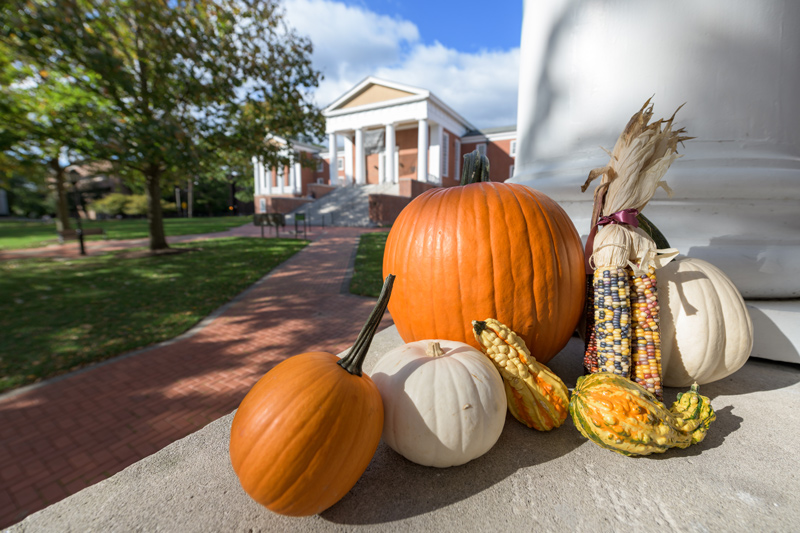
HBCU Introduction to Practical Conservation

Practical Art Conservation Education
A TIP-C/DIP-C/SIP-C program to introduce HBCU students to the field of conservation
This summer program of study was first developed in collaboration with the Alliance of HBCU Museums and Galleries and Yale University and hosted its initial cohort in 2017, generously supported with financial contributions from the Samuel H. Kress Foundation, University of Delaware, and private donors. Thanks to a new grant from the Bank of America Charitable Foundation, the program has expanded and now hosts ten students for six weeks.
Initially, the program was named the Two-week Introduction to Practical Conservation (TIP-C) and focused on the examination and preservation of four dioramas from the Legacy Museum, Tuskegee University. These mixed-media (largely plaster and painted wood) fragile dioramas were part of a series of 33 made in 1940 under the supervision of African American artist Charles Dawson. Seventy artists and craftspeople participated over a period of only three months to mount the landmark 1940 "American Negro Exposition" in Chicago. Dawson transported 20 of the original 33 to Tuskegee by 1945 and carried out early attempts at restoration. To date, eight of the dioramas have been treated: four at UD, two at Buffalo State University, and one each at Fisk University and the Lunder Center of the Smithsonian American Art Museum. Current work on the dioramas is paused due to hazardous materials they have been found contain.
The Covid-19 pandemic forced the transition from an in-person program to one that could be carried out on-line. In 2020, the program was renamed DIP-C and became the Distance-Learning Introduction to Practical Conservation. We also welcomed a new partner in the Conservation Center at New York University Institute for Fine Arts. The program retained its rigor and leaned on contextualizing the role of conservation in communities while teaching preventive measures, conservation philosophy, and ethics. Hands-on activities were retained through a combination of student-supplied artifacts and shipped materials.

After two years of distance instruction, the program underwent another transformation. Building on the five-year foundation of teaching and engaging HBCU students, year six offered a longer six-week internship practical for those who have previously participated in an introductory conservation program and are interested in exploring the career path further. For this version of the program, it is now named the Six-Week Introduction to Practical Conservation(SIP-C), trimmed to be more flexible in adapting the program to the changing needs of the world around us.
Since 2023, SIP-C now hosts ten students. The full cohort begins at the Winterthur Museum for a two-week introduction, then breaking off into pairs for a month-long practical internship at five different host institutions.
Through TIP-C/DIP-C/SIP-C in all its renditions, competitively selected students from HBCUs are provided with a comprehensive introduction to the field of art conservation, allowing them to work on all legs of the conservation "three-legged stool": art history, hand skills, and chemistry. Students work with University of Delaware faculty and Winterthur staff to learn about the history of materials and techniques of a variety of media, for example paper marbling, early photography, fiber and fluorescence microscopy, tempera paint making, and preventive care, among other topics. When held in person, the students' experience is augmented with museum and conservation studio visits. In an on-line format, guest speakers from other museums share their personal stories and experiences. TIP-C/DIP-C/SIP-C engages STEM students who have an interest in art or art students with an interest in science and provides them with an opportunity to combine their STEM and art interests.


The conservation instruction was ably led by UD Professors Dr. Joyce Hill Stoner for the initial three years of TIP-C and Nina Owczarek in summers 2020 and 2021 for DIP-C. Owczarek and Stoner now co-lead the introductory SIP-C program. The heads of the placement labs lead the internship portions at their respective institutions, which differ from year to year.
While this program of study and practice centers on practical conservation, students are also introduced to additional aspects of conservation and collections care. This internship has allowed selected HBCU students to work with many conservation professionals and to apply scientific and artistic knowledge and skills to the preservation of cultural artifacts. Peer-support networks have been created between the students and professionals to further foster the students' interest in the care of collections of African American cultural heritage at their own institutions and to help them prepare for graduate study.
The workshop organizers are pleased with the success of the TIP-C/DIP-C/SIP-C diversity initiative. Of the more than 26 students who participated during the summers of 2017-2021, nearly 45% have demonstrated interest in pursuing advanced study in art conservation or a closely related field. Students who express a desire to pursue art conservation or closely related field are connected with professionals in their area of interest to help them secure internships and apply to graduate schools.
Winterthur, UD, and the Alliance have worked closely together to develop an exciting vision and to deliver programs of study that have introduced the art conservation profession to wonderfully talented and engaged cohorts of students, while also assisting with the preservation of the rich, cultural treasures of HBCU museum and galleries.
Call for Applications
The portal for the 2025 application is now open via the Alliance for HBCU Museums and Galleries website.

